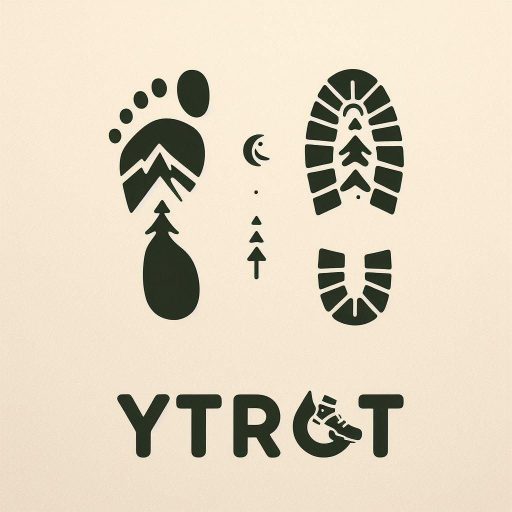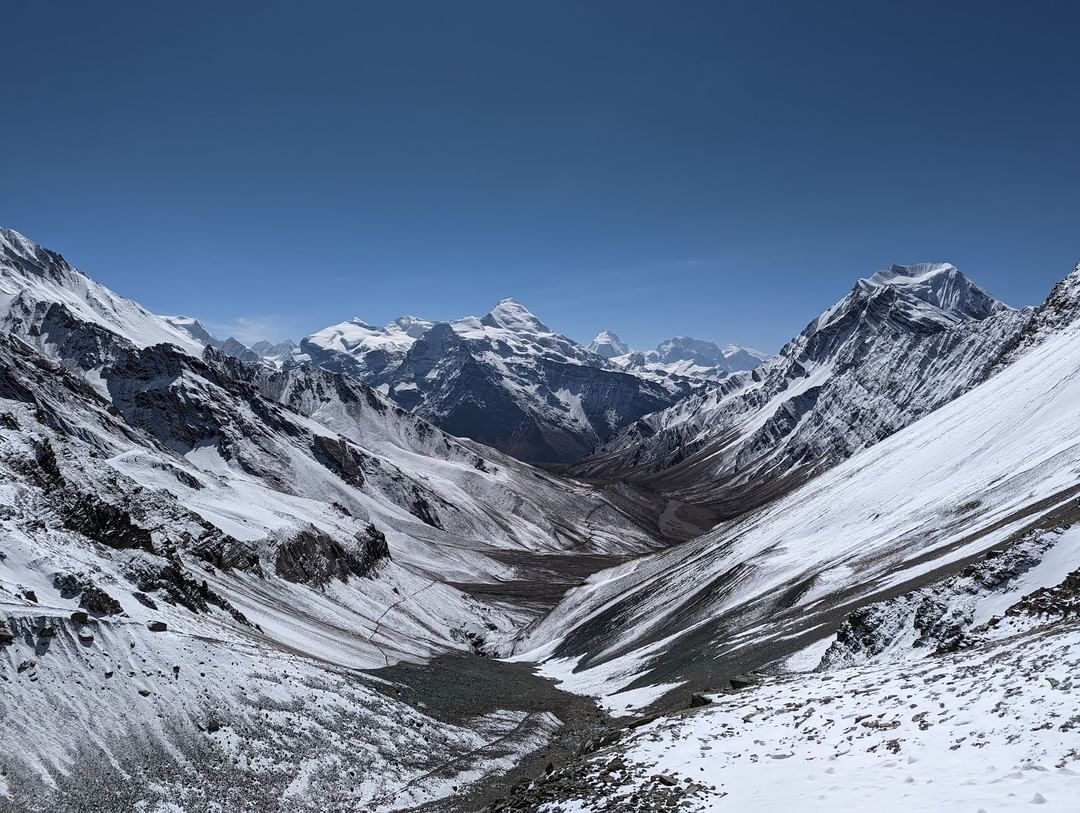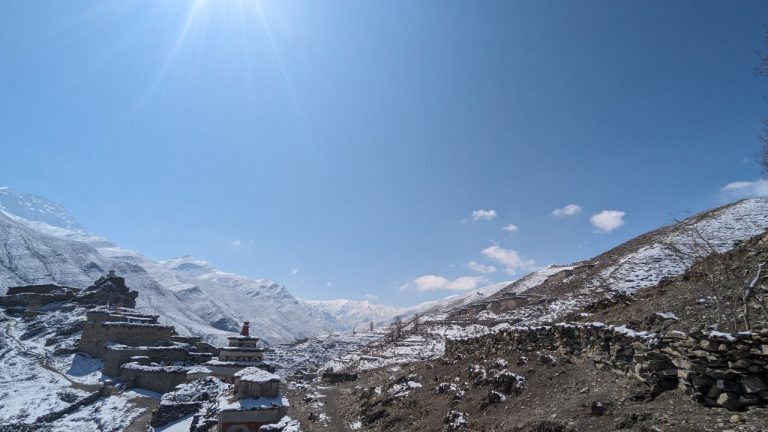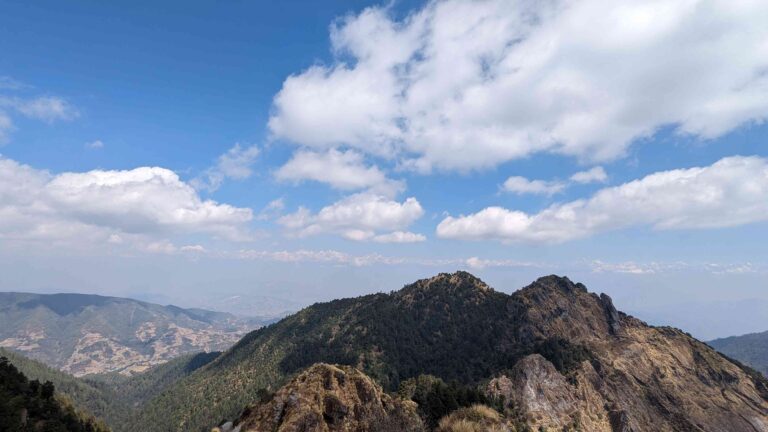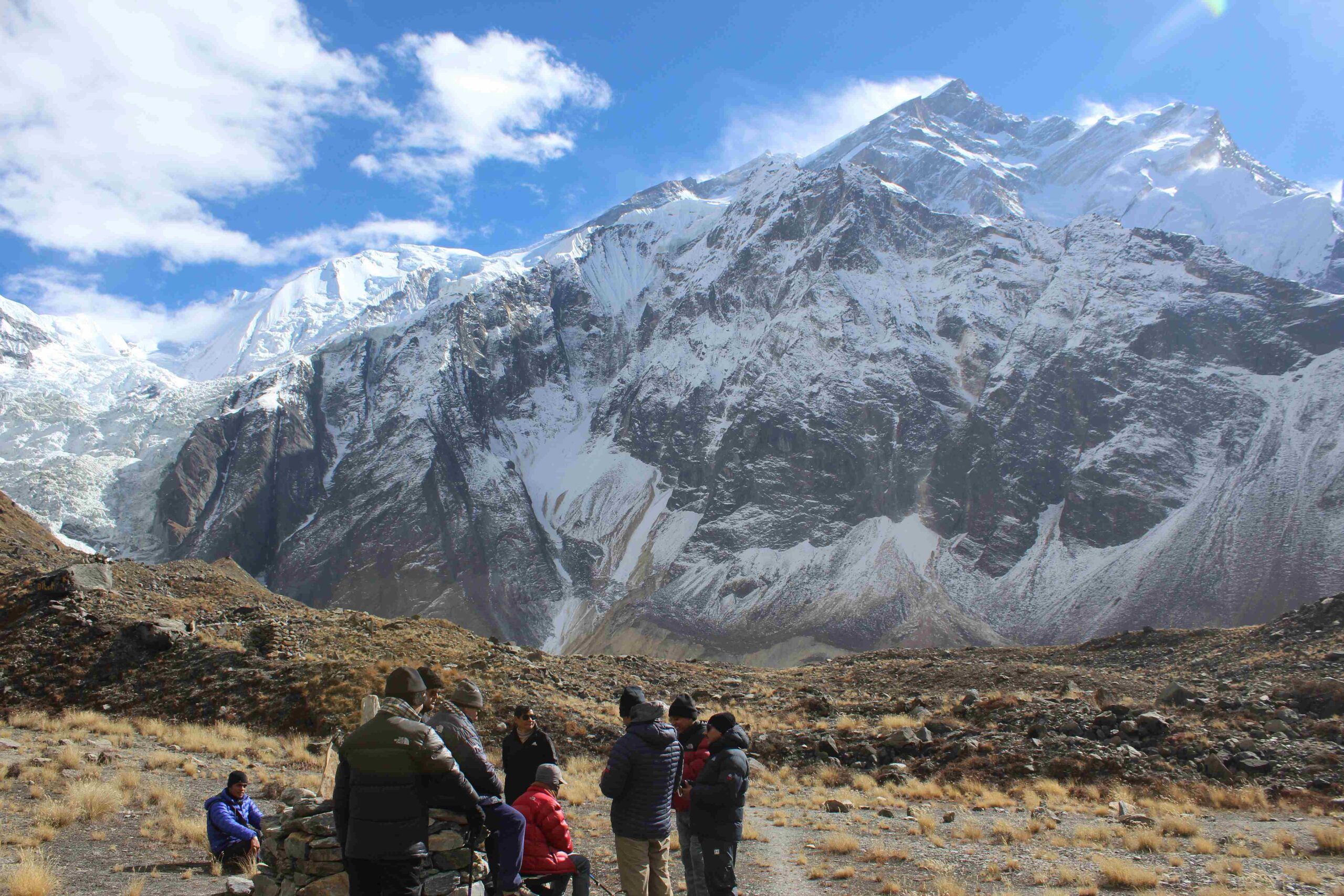The Nar Phu Trek is a startling adventure that unfolds in the Trans Himalaya, directly below Mount Annapurna’s north face. In the Nar Phu Valley Short Trek, cultural, adventurous, and scenic phenomena all come together. Yaks, wild goats, Gombas, glaciers, deserted historic villages, lovely woods, breathtaking rock formations, sky-towering peaks, adventurous passes, and medieval Tibetan culture passed down from ancestors are among the trip’s main features.
Highlights of Nar-Phu Trek
- Trek to the Annapurna region’s uncharted landscapes.
- Trek to the lovely Nar Phu valley, a very uncharted area.
- Take in the breathtaking alpine views of the tall snow-capped peaks and historic settlements.
- Explore the secluded mountain valley to experience medieval Tibetan culture.
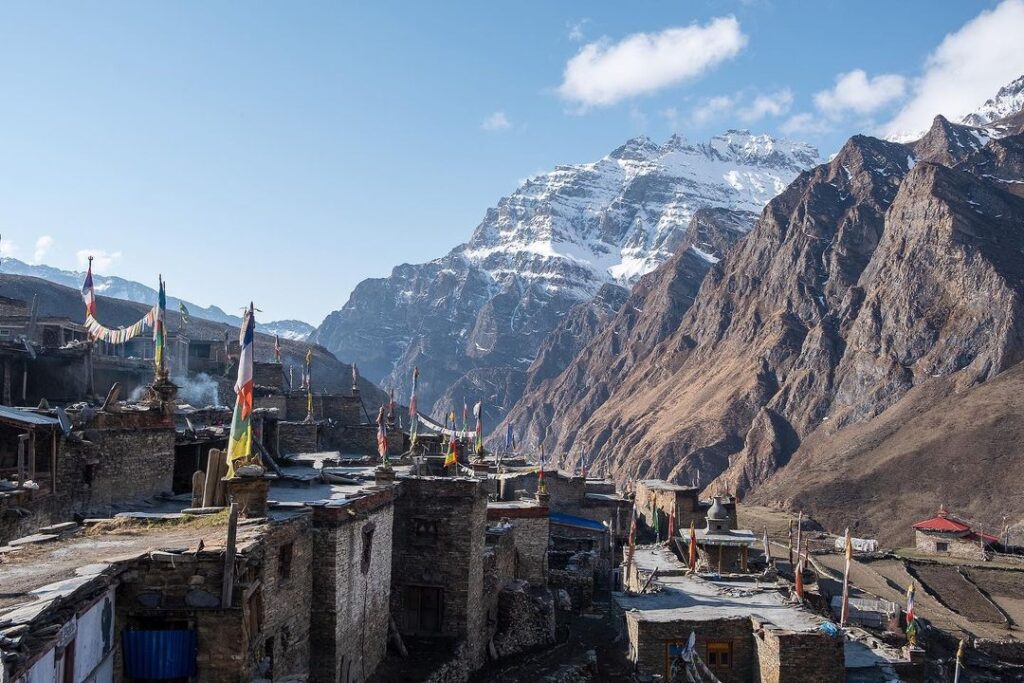
Short Itinerary of Nar Phu Trek
| Day 1 | Drive from Kathmandu to Besisahar to Koto | Drive 12 Hours |
| Day 2 | Trek from Koto to Meta | Trek 8 Hours |
| Day 3 | Trek from Meta to Phu Village | Trek 8 Hours |
| Day 4 | Explore and Rest and Phu Village | |
| Day 5 | Trek to Nar Phedi | 7 Hours |
| Day 6 | Trek to Nar Village | 7 Hours |
| Day 7 | Trek to Ngawal via Khang la Pass | 7 hours |
| Day 8 | Trek to Pisang, Drive to Besisahar | Trek 4 Hours, Drive 5 Hours |
| Day 9 | Drive Back to Kathmandu | Drive 6 Hours |
Detailed Itinerary of Nar Phu Trek
Day 1: Drive from Kathmandu to Koto
You will board an early-morning bus to Besishahar, which will take you around 6 hours to go along a beautiful road. You will pass through some very beautiful countryside along the way, including snow-capped mountains, lush hills, rivers, and villages. Once at Besisahar, switch to a four-wheel drive vehicle for the arduous drive to Koto.
Before reaching Koto, you’ll pass via Bhulbhule, Syange, Chamje, Dharapani, and Thanchok. This newly built off road is quite difficult, but it passes through a thick pine forest and provides views of Manaslu and Annapurna II along the way.
Day 2: Trek from Koto to Meta
After getting your limited area permit at the Police Check Post, you proceed to walk along the Soti Khola’s bank. Hike up through lovely woodlands above the Phu Khola (river) after crossing a bridge going to the Nar Phu valley (river). You pass numerous small shelters (caves), a pilgrims’ shelter (the “Dharmasala”), and several lovely woodlands on the trail. The trail actually goes beneath a sizable waterfall just before the Dharmasala, when the forest begins to thin out, as we draw near to a small canyon.
On the final stretch into Meta, there is a steep hill to climb, but once there, there are breathtaking vistas of some of the area’s enormous snowy peaks.
Day 3: Meta to Phu Village
One of the finest excursions in the Himalayas is the trail that ascends the valley today following a small picturesque river. The landscape covers of white rocks, low shrubs and juniper, delicate brick-red and orange leafed bushes, crumbling slate shelves, white, sandy paths, and twisted trees.
White rocks, low shrubs and juniper, sporadic evergreens, delicate brick-red and orange leafed bushes, crumbling slate shelves, white, sandy paths, and twisted trees make up the landscape. You’ll arrive at a monolith that defends the arduous trek up to Phu after passing through lovely canyons and gorges. The three Phu settlements are first visible through this gate, Pupigyal Kwe.Additionally, there is an old “Dzong” (fortress) and the remnants of two other forts that were all once impressively perched atop the plains before Phu.
Day 4: Explore Phu and Rest
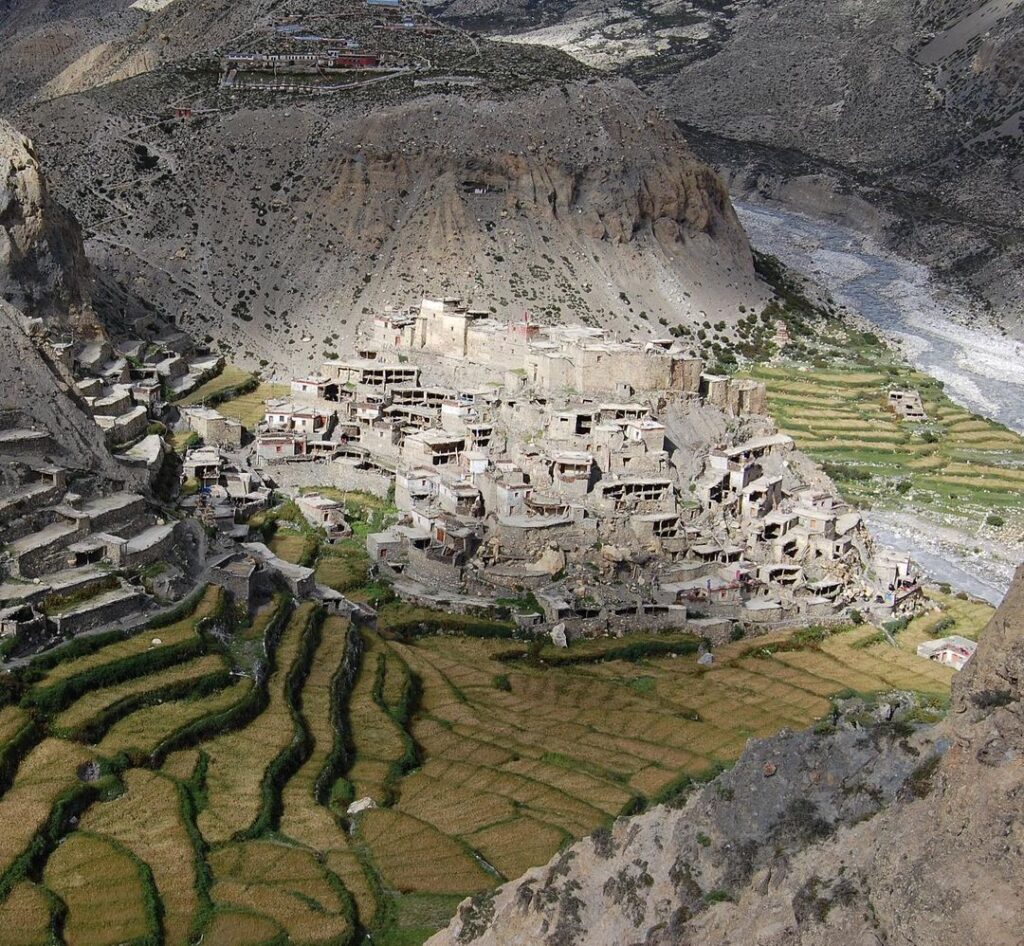
Spending an acclimatization day in Phu is advised due to the high altitude. Hike up to the base camp of Himlung Himal or explore the village. A day spent watching the locals of Phu, a fascinating village, spin their yak and sheep’s wool, grind mustard seeds into an oil-making paste, or do other daily tasks is a day well spent. Fort and a monastery that dates back a century are equally impressive.
Day 5: Trek to Nar Phedi
You return through the Phu gate and then make our way down to the river after breakfast. From there, you return the same way to the delightful campsite at Junam Karka. Retrace your steps back down to Meta, but divert to the monastery at Nar Phedi, where you will spend the night.
Day 6: Trek to Nar Village
Climb up a hill toward Nar along a meandering trail. As you approach the historic village, pass a row of chortens that have been beautifully painted and bamboo roofs. Even though Nar is not far from the main Annapurna trail, few hikers go there despite the fact that it is one of the most magnificent places on earth.
In Nar, you might find the town square bustling with women using back-strap looms to weave wool fabric for rugs and blankets during the day. On the outskirts of Nar, a few brand-new teahouses offer a pleasant lodging with a sizable menu.
Day 7: Trek to Ngawal via Khang La Pass
The views of Annapurna II, Gangapurna, Tilicho peak, surrounding peaks, Marsyngdi valley, and Hunde airport are truly breathtaking from the Kang La Pass. You have enjoyable views of Ngawal, which has an interesting cluster of chortens and prayer flags, as the trail gently descends. On the higher Pisang path of the Annapurna circuit, which may be reached in as little as two hours from the pass, we can see signs for meditation caves high in the hills.
On the upper Pisang section of the Annapurna Circuit, Ngawal is unquestionably completely different from the historic villages you’ve just been to. There will be Wifi and phone signals at most lodges, and the menus are larger and more varied.
Day 8: Trek to Pisang, Drive to Besisahar
You start your descent early in the morning. Continue your final few hours of walking to Pisang early. Just outside Pisang, a lovely lake is passed along a wide, comfortable trail. After stopping for a quick snack in the village, return to Besisahar in a four-wheel vehicle.
Day 9: Drive back to Kathmandu
Leave behind one of the most breathtaking experiences on earth as you return to Kathmandu.
Although there are high passes, the incidence of altitude sickness is lower here than in other trekking regions in Nepal. This contrast demonstrates how superior the Nar Phu region is to the Khumbu region of the Everest Base Camp Trek. We cannot predict who will have altitude sickness, though. Age or health are not factors. However, the schedule of our tour offers you plenty of time to adjust. The key is to move carefully, stay hydrated, and pay attention to what your body is telling you.
The Nar Phu Valley trek is a challenging one. There are a few days that require 8-9 hours trekking and not a lot of flexibility in the distances that you have to cover every day. In addition to this, the altitude gains are higher and higher every day and you’ll need to adjust quickly. So, I’d only recommend this trek to people who have done some trekking in the past. That doesn’t mean that a novice can’t do it, but it’s better to start with something easier.
Also see: Tsum Valley Trek – Secluded Heaven in Manaslu – YTROT
